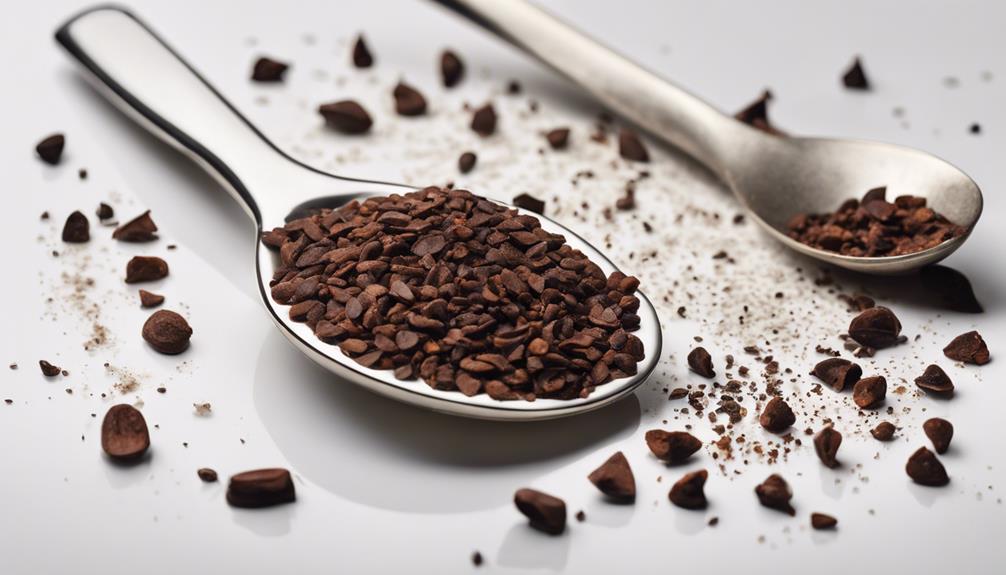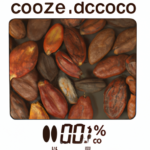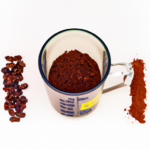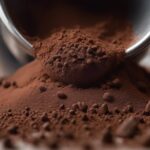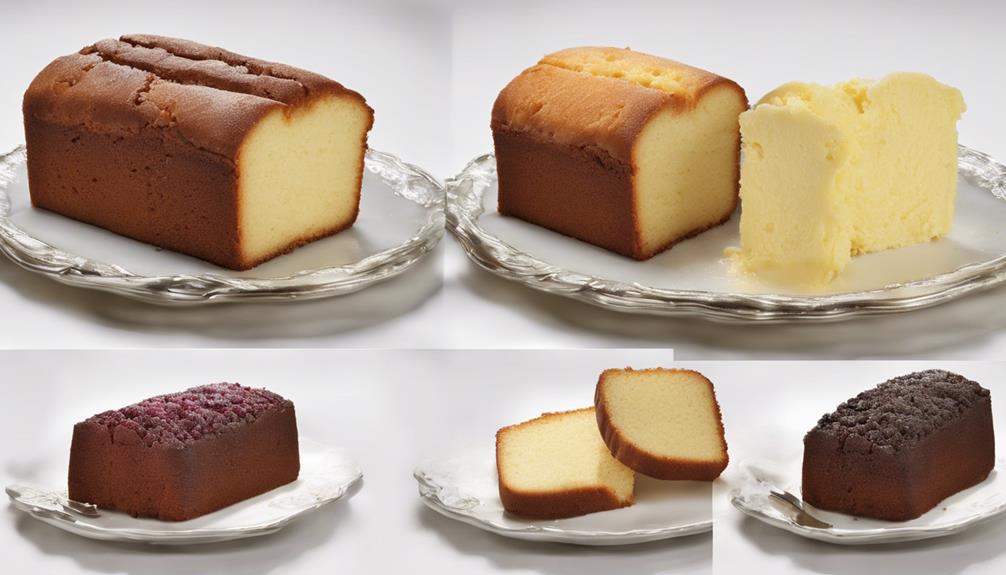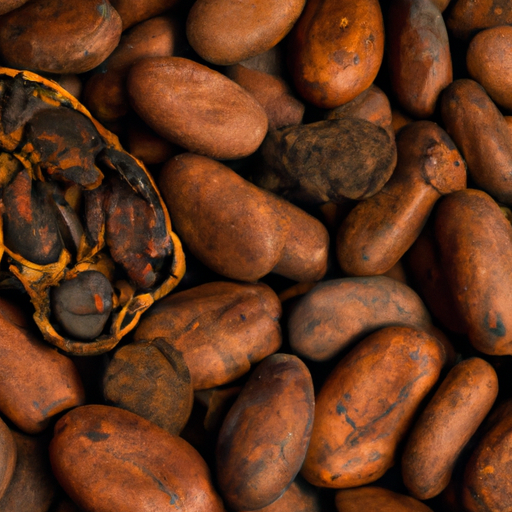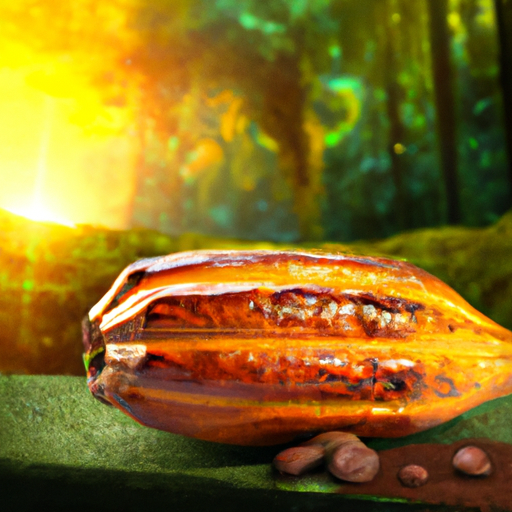Cacao nibs contain approximately 10.4 mg of caffeine per teaspoon, offering a gentle energy lift that is distinct from the potent impact of coffee beans. Compared to other items like tea, cacao nibs generally have lower caffeine content, making them a great option for those seeking moderate levels of caffeine. Factors such as roasting techniques and the source of cacao beans can affect the caffeine levels in nibs, so if you are interested in incorporating cacao nibs into your diet or daily routine, it is worth considering these aspects.
Key Takeaways
- Cacao nibs contain approximately 10.4 mg of caffeine per teaspoon.
- Nibbling on cacao nibs can provide a subtle energy lift.
- Cacao nibs offer a natural form of caffeine.
- Savoring cacao nibs can provide a gentle caffeine kick.
- Cacao nibs have a lower caffeine content compared to coffee beans.
Cacao Nibs Caffeine Content
Cacao Nibs contain approximately 10.4 mg of caffeine per teaspoon. This means that if you're looking for a little pick-me-up, nibbling on these crunchy bits of cocoa goodness might just give you the boost you need. While it's not as much caffeine as a cup of coffee, the small amount in cacao nibs can still provide a subtle energy lift without the jitters that sometimes come with higher doses. It's like nature's own version of a gentle caffeine kick!
When you bite into a cacao nib, you're not just indulging in a delicious treat; you're also getting a tiny dose of caffeine that can help perk you up. Whether you sprinkle them on yogurt, blend them into smoothies, or simply enjoy them on their own, cacao nibs offer a unique way to enjoy a bit of caffeine in a natural form. So go ahead, savor those cacao nibs knowing that you're not just enjoying their rich flavor, but also a touch of energizing caffeine.
Cacao Nibs Vs Coffee Beans
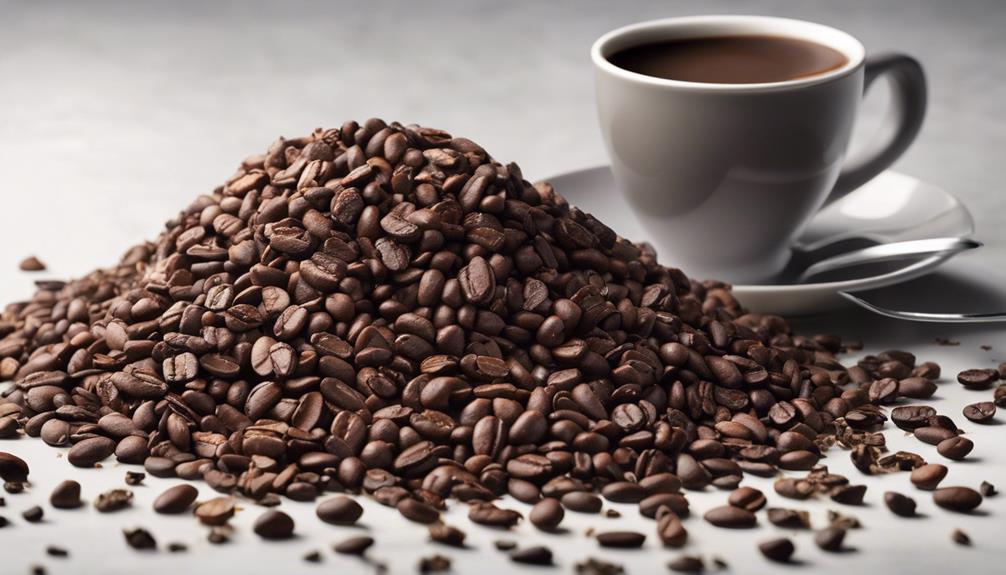
Cacao nibs and coffee beans differ not only in their flavor profiles but also in their caffeine content.
While cacao nibs offer a milder stimulant effect due to their lower caffeine levels, coffee beans pack a much stronger punch in regards to this stimulant.
Understanding the differences between these two sources of caffeine can help individuals make informed choices about their consumption habits.
Flavor Profiles Compared
In comparing the flavor profiles of cacao nibs and coffee beans, a distinct contrast emerges between their respective taste essences.
- Cacao nibs offer a unique chocolate essence, rich and bitter in flavor.
- Coffee beans present a roasted and acidic taste, providing a bold coffee flavor.
- The bitterness of cacao nibs is more subtle compared to the strong jolt of coffee.
- Cacao nibs give a milder caffeine boost, while coffee beans contain notably higher caffeine content.
Understanding these flavor differences can help you choose between the chocolatey essence of cacao nibs and the bold coffee taste of coffee beans. Enjoy exploring the diverse flavors each has to offer!
Caffeine Content Contrast
Comparing the caffeine content between cacao nibs and coffee beans reveals a significant contrast in their potency levels. Cacao nibs contain approximately 10.4 mg of caffeine per teaspoon, offering a milder stimulant effect compared to coffee beans. Below is a comparison table highlighting the caffeine content disparity between these two popular sources:
| Cacao Nibs | Coffee Beans | |
|---|---|---|
| Caffeine Content (per teaspoon) | 10.4 mg | Varies* |
| Potency Level | Mild | High |
| Stimulant Effect | Subtle | Intense |
| Energy Boost Experience | Gentle | Strong |
*The caffeine content in coffee beans can vary widely depending on factors like roast level and brewing method.
Factors Affecting Caffeine in Nibs
When examining the factors that influence the caffeine content in cacao nibs, one must consider the type of cacao bean utilized.
- Type of Cacao Bean: Different varieties of cacao beans contain varying levels of caffeine, impacting the final caffeine content in cacao nibs.
- Roasting Process: Roasting cacao beans can alter the caffeine levels in cacao nibs, with higher roasting temperatures potentially reducing the caffeine content.
- Processing Methods: The techniques used during the processing of cacao beans into nibs can affect the caffeine concentration present in the final product.
- Brand Variations: Different brands of cacao nibs may have differing levels of caffeine due to variations in sourcing, processing, and quality control measures.
Understanding these factors is essential for those interested in the caffeine content of cacao nibs. By being aware of how the type of cacao bean, roasting process, processing methods, and brand variations can influence caffeine levels, consumers can make more informed choices when selecting cacao nib products.
Cacao Nibs Processing Methods
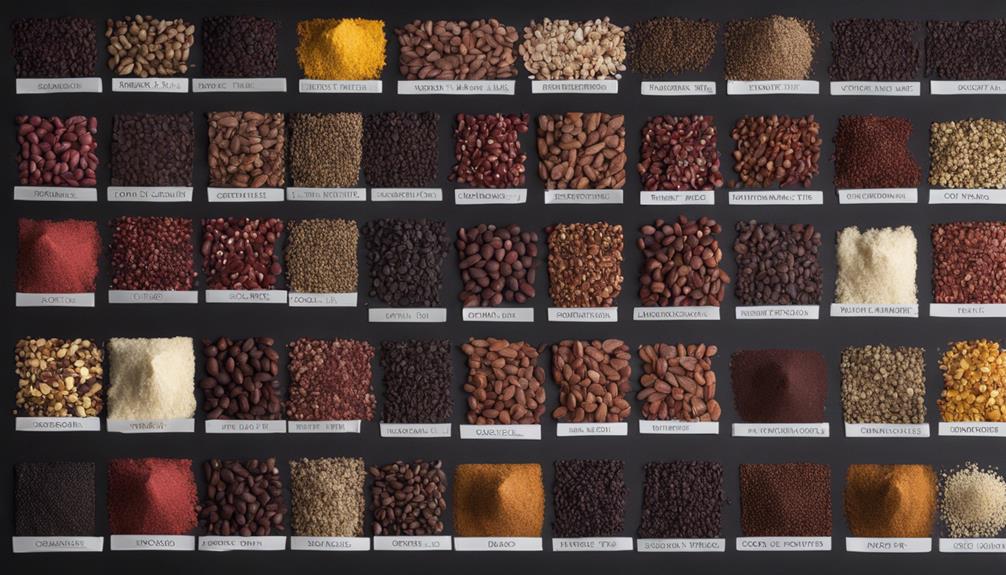
Considering the impact of processing methods on the nutritional aspects and caffeine content of cacao nibs, the transformation from cacao beans to nibs involves pivotal steps that determine the final product's characteristics. Roasting cacao beans is a common method used in the processing of cacao nibs. This process not only helps in removing moisture from the beans but also enhances the flavor by bringing out rich, deep cocoa notes. However, roasting can slightly reduce the overall nutritional value of the nibs compared to raw processing methods.
When cacao beans are roasted to make nibs, the caffeine content per serving may increase slightly due to the concentration that occurs during the roasting process. This means that roasted cacao nibs may have a slightly higher caffeine content compared to raw cacao nibs.
Understanding these processing methods is essential for determining the characteristics and caffeine levels of cacao nibs, allowing consumers to make informed choices based on their preferences and dietary needs.
Caffeine Comparison: Nibs Vs Tea
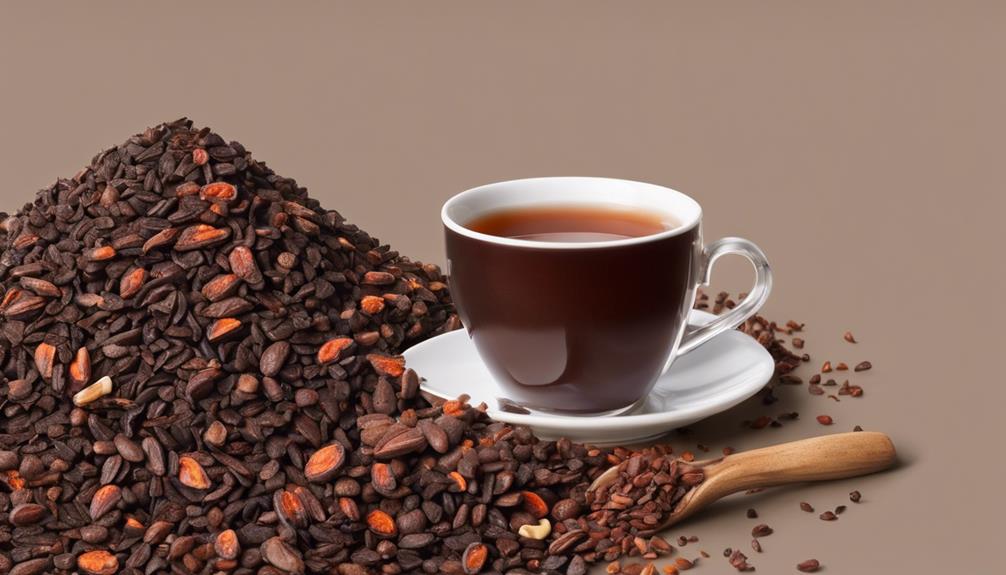
When it comes to caffeine content, cacao nibs offer a much lower amount compared to tea. Here are some key points to take into account:
- Cacao Nibs: A teaspoon of cacao nibs contains approximately 10.4 mg of caffeine, making it a gentle source of this stimulant.
- Tea: In contrast, a standard 8 oz cup of tea can contain anywhere from 30 to 70 mg of caffeine, depending on the type and brewing method.
- Energy Boost: While cacao nibs provide a slight energy lift, the caffeine in tea might lead to a more noticeable effect.
- Stimulant Choice: Opting for cacao nibs instead of tea can be a flavorful and nutritious way to integrate a small amount of caffeine into your routine without the potential jitters associated with higher caffeine beverages.
Considering the varying caffeine levels, choosing between cacao nibs and tea can depend on your preference for a milder stimulant or a more substantial energy boost.
Health Implications of Nibs Caffeine
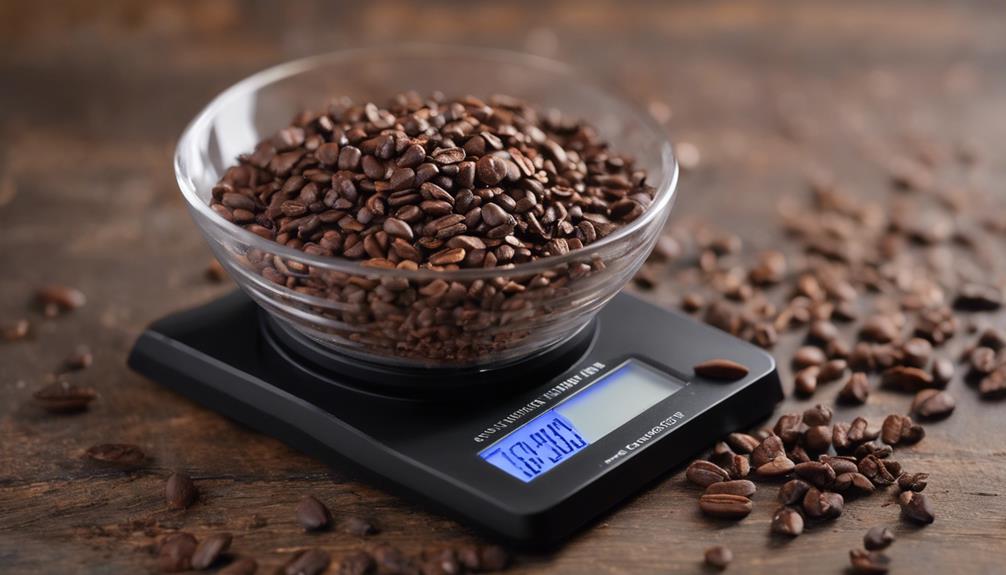
Cacao nibs contain a modest amount of caffeine, which can impact our health in various ways. Understanding the caffeine content in nibs enables us to make informed choices about our daily consumption.
It's crucial to contemplate how much nibs we consume to enjoy their benefits without exceeding recommended caffeine intake levels.
Caffeine Content Comparison
Comparatively, the caffeine content in cacao nibs is noticeably lower than that found in popular caffeinated products like Awake Chocolate and Jolt Gum.
- Cacao nibs contain about 10.4 mg of caffeine per teaspoon, much lower than Awake Chocolate's 110 mg and Jolt Gum's 45 mg.
- Caffeine levels in cacao products can vary due to processing methods and growing conditions.
- Studies indicate that cacao nibs, lacking natural sweetness, may have differing caffeine content based on the bean variety.
- Monitoring the caffeine in cacao nibs can aid in managing overall caffeine intake and making informed dietary decisions.
Effects on Health
Incorporating cacao nibs into my diet provides a natural caffeine source that can subtly enhance focus and alertness without the jitters associated with higher caffeine intake. The caffeine content in cacao nibs, at around 10.4 mg per teaspoon, is lower than that in coffee or energy drinks.
This moderate caffeine level can have a gentle stimulating effect on the central nervous system, aiding in improved concentration. By consuming cacao nibs mindfully, one can enjoy the benefits of heightened alertness without the drawbacks of excessive caffeine.
Remember that while cacao nibs can offer a mild energy boost, moderation is key to reaping their health benefits effectively.
Daily Consumption Recommendations
For best health benefits, it's important to take into account the suggested daily intake of caffeine from cacao nibs. Here are some recommendations to keep in mind:
- Moderation is key: Enjoy cacao nibs in reasonable amounts to benefit from their low caffeine content.
- Safety first: Daily consumption of cacao nibs is generally safe for most people due to their mild caffeine levels.
- Avoid excess: It's unlikely to consume cacao nibs excessively to match the caffeine levels in coffee or energy drinks.
- Gentle energy boost: The caffeine in cacao nibs can provide a subtle pick-me-up without the jitters often associated with higher caffeine sources.
Recommended Daily Nibs Consumption
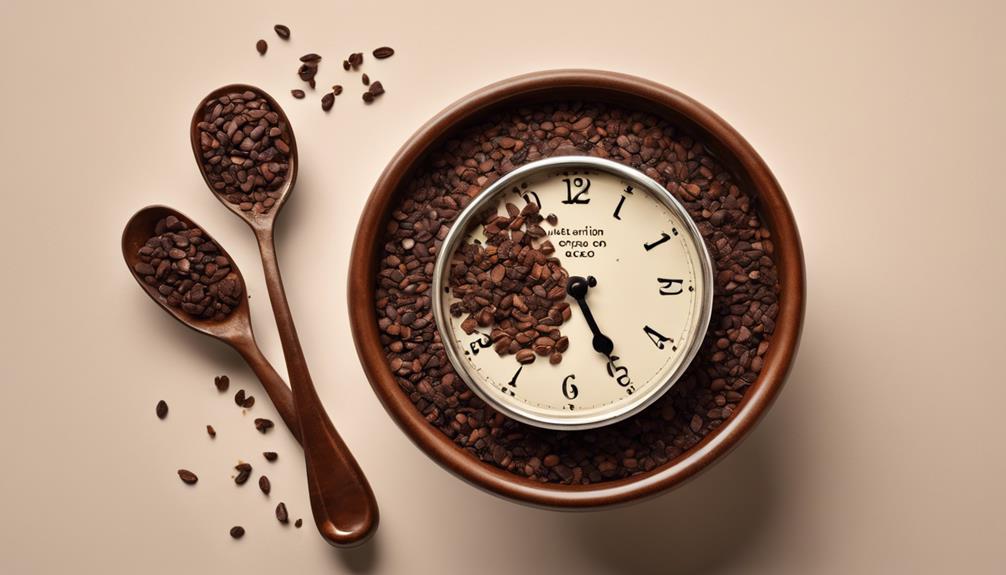
Moderation in consuming cacao nibs daily is key due to their caffeine content. Cacao nibs contain approximately 10.4 mg of caffeine per teaspoon, making them a mild source of this stimulant. It's crucial to emphasize that the caffeine levels in cacao nibs are lower compared to popular caffeinated beverages like coffee and energy drinks.
While cacao nibs can provide a gentle energy boost without the jittery side effects often associated with higher caffeine products, it's still advisable to be mindful of your overall caffeine intake from various sources.
To enjoy the benefits of cacao nibs without overdoing it on caffeine, consider incorporating them into your diet in moderation. One to two teaspoons a day can be a good starting point for most individuals. Remember that everyone's caffeine tolerance varies, so listen to your body and adjust your intake accordingly.
Cacao Nibs and Energy Levels
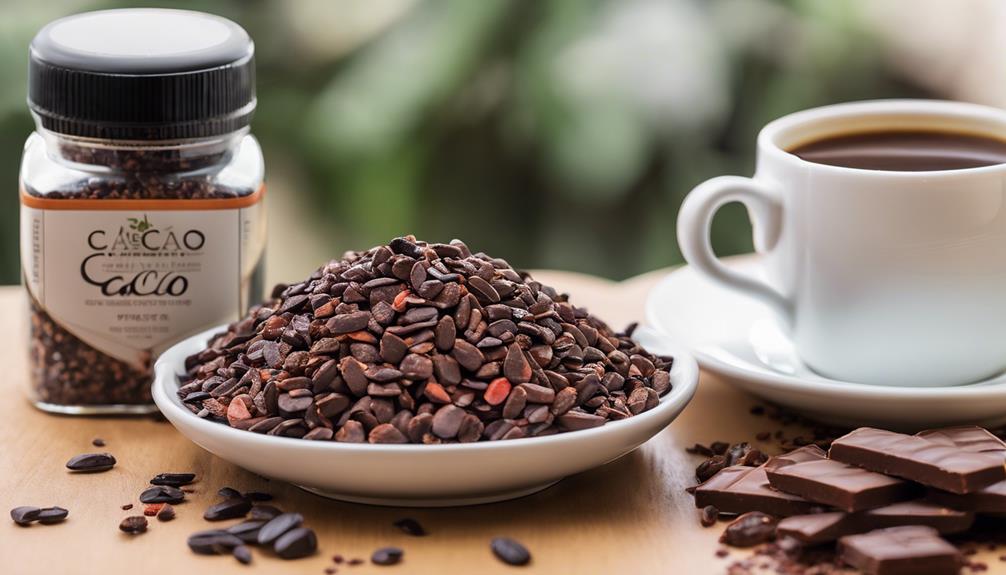
Occasionally, cacao nibs can provide a gentle energy boost due to their modest caffeine content. Here are some key points to understand how cacao nibs can affect your energy levels:
- Mild Boost: The caffeine in cacao nibs, around 10.4 mg per teaspoon, can offer a subtle increase in alertness and focus without the intense jitters often associated with higher caffeine levels.
- Comparative Low Caffeine: While cacao nibs contain caffeine, the amount is significantly lower than what you'd find in coffee or energy drinks, making it a gentler option for a pick-me-up.
- Energy without Overstimulation: Consuming cacao nibs can offer a natural way to boost your energy levels without overwhelming your system, providing a smoother and more sustained source of alertness.
- Mindful Consumption: Being mindful of your overall caffeine intake, particularly if you're sensitive to caffeine or monitoring your daily consumption, to maintain a balanced approach to enjoying cacao nibs for their energy benefits.
Cacao Nibs Caffeine Sensitivity
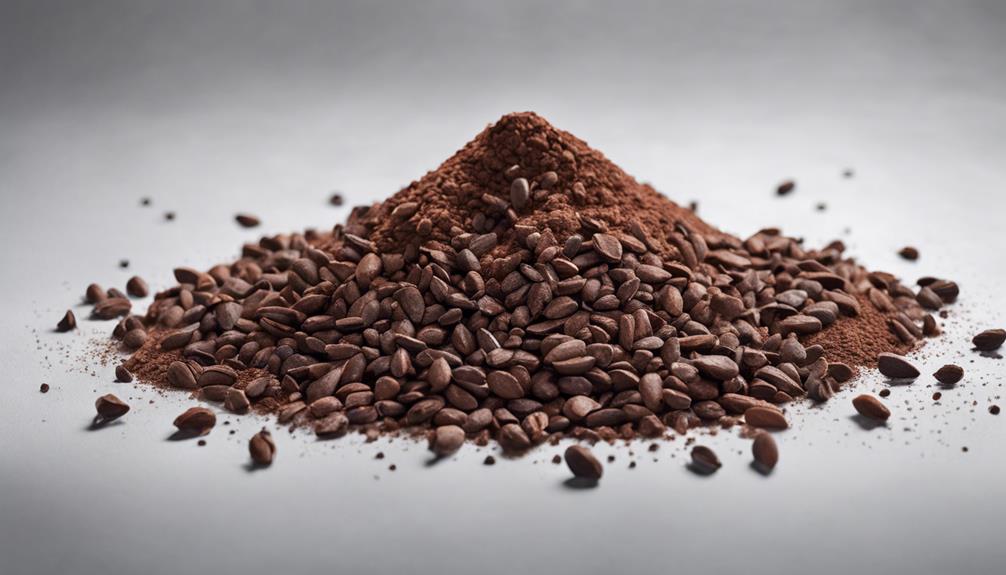
Understanding how your body reacts to caffeine is crucial when consuming cacao nibs, as individuals may respond differently based on their sensitivity to caffeine. Adjusting your intake accordingly based on your body's reaction is important.
| Factors Affecting Cacao Nibs Caffeine Sensitivity | Description |
|---|---|
| Sensitivity to Caffeine | Some individuals are more responsive to caffeine in cacao nibs, leading to varying responses such as jitteriness or restlessness. |
| Source of Cacao Beans | The origin of cacao beans can impact the caffeine content in cacao nibs, affecting how individuals react to the caffeine present. |
| Presence of Heavy Metals | Heavy metals like lead or cadmium, if found in cacao beans, can also impact how individuals process caffeine, potentially intensifying its effects. |
Nibs Caffeine for Different Diets
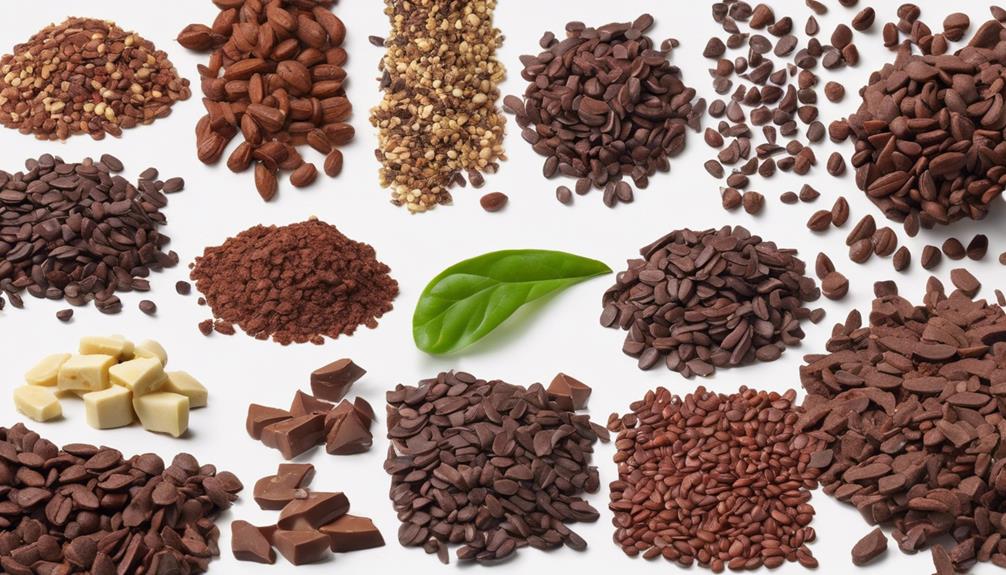
When considering cacao nibs for different diets, it's important to recognize their lower caffeine content compared to products like Awake Chocolate and Jolt Gum. This makes cacao nibs a suitable option for those looking for a more moderate caffeine intake.
Checking product labels for specific caffeine levels can help individuals tailor their consumption to fit their dietary needs.
Caffeine Content Comparison
Comparing the caffeine content in cacao nibs to other caffeinated products reveals varying levels of stimulation for individuals following different diets.
- Cacao (Cocoa) Nibs: Approximately 10.4 mg of caffeine per teaspoon.
- Awake Chocolate: Contains 110 mg of caffeine.
- Hershey's Special Dark Bars: Around 20 mg of caffeine.
- Jolt Gum: Contains 45 mg of caffeine.
Each product offers a unique caffeine content, influencing the level of alertness experienced. While cacao nibs provide a subtle boost with their lower caffeine content, Awake Chocolate delivers a more potent dose. Understanding these differences can help individuals choose the right option based on their dietary preferences and desired level of stimulation.
Nibs Suitable for Diets
For individuals with dietary restrictions or seeking a controlled caffeine intake, cacao nibs offer a suitable option due to their moderate caffeine content. When considering different diets, cacao nibs can be a great choice for those looking to limit their caffeine intake while still enjoying the benefits of this delicious treat. Below is a comparison table showcasing the suitability of cacao nibs for various diets:
| Diet Type | Suitability | Reason |
|---|---|---|
| Low-Caffeine | Excellent choice | Contains lower caffeine content compared to coffee or energy drinks |
| Vegan | Suitable option | Plant-based product without animal-derived ingredients |
| Gluten-Free | Safe to consume | Naturally free of gluten, making it a safe choice for gluten-sensitive individuals |
Remember to enjoy cacao nibs in moderation as part of a balanced diet to reap their benefits without exceeding your caffeine limits.
Frequently Asked Questions
Are Cacao Nibs High in Caffeine?
Yes, cacao nibs are high in caffeine, containing approximately 10.4 mg per teaspoon. It's important to check labels as caffeine levels can vary. Factors like growing conditions and plant species influence the caffeine content in cacao nibs.
Are Cacao Nibs a Stimulant?
Oh, cacao nibs, my cozy stimulant. They gently awaken me. A touch of caffeine, a caress to my senses. Not jolting like coffee, but a tender nudge. Cacao, my subtle energy dance partner.
Can Cacao Nibs Keep You Awake?
Cacao nibs can keep me awake due to their caffeine content. Moderation is key to avoid sleep disturbances. Monitoring intake is essential for those sensitive to caffeine. Enjoying cacao nibs responsibly can provide a mild energy boost.
Does Cacao Have More Caffeine Than Coffee?
I've been wondering if cacao has more caffeine than coffee. It's surprising that cacao contains just a fraction of the caffeine in coffee. I'm sticking to my coffee for that morning jolt!
Are Cacao Nibs a Good Source of Caffeine for an Energy Boost?
Yes, cacao nibs are a good source of energy boost with cacao caffeine. With about 12 milligrams of caffeine per ounce, they can provide a natural pick-me-up without the jitters associated with coffee. Additionally, they are packed with antioxidants and other essential nutrients for sustained energy.
Conclusion
To sum up, cacao nibs contain about 12-20 milligrams of caffeine per ounce, which is lower than coffee beans but higher than tea. Factors such as processing methods and individual sensitivity can affect the caffeine content in nibs.
It's recommended to consume no more than 1-2 ounces of cacao nibs per day to avoid excessive caffeine intake. Consider your own caffeine tolerance and dietary needs when incorporating cacao nibs into your diet.

